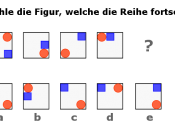Chapter 11 Intelligence
Malika Stanley
Period Five AP Psychology
Mr. Bodine ( The Great One)
Intelligence is the ability to learn from experience, solve problems, and adapt to new situations. Psychologists agree that people have specific abilities, such as verbal and mathematical aptitudes. However, they debate whether a general intelligence (g) factor runs through them all. Factor analysis and studies of special conditions, such as the savant syndrome- a condition in which a person otherwise limited in mental ability has an exceptional specific skill, such as in computation or drawing-have identified clusters of mental aptitudes.
Several studies report a very slight correlation between head size (adjusted for body size) and intelligence test score, and a slightly greater (though still modest) correlation between brain size and intelligence test scores. Other studies suggest that the brains of highly skilled people require less glucose energy while performing certain cognitive task. Highly intelligent people also tend to take in information more quickly and to show faster brain-wave responses to simple stimuli such as a flash of light.
Time will tell whether these new neurological approaches to intelligence will have more significant results. If they do, researchers will surely debate the extent to which nature and nurture affects the brain's structure and functioning.
Test are commonly classified as either aptitude test (designed to predict learning ability, as in the Weschsler (WAIS)-the most widely used intelligence test; contains verbal and performance nonverbal sub-tests) or achievement tests (designed to assess current competence). A good test must be standardized, so that any person's performance can be meaningfully compared to others'; reliable, so it yields dependably consistent scores; and valid, so it measures what it is supposed to measure. Test scores usually fall into a bell shaped distribution, the normal curve. The average score is assigned an arbitrary number.


